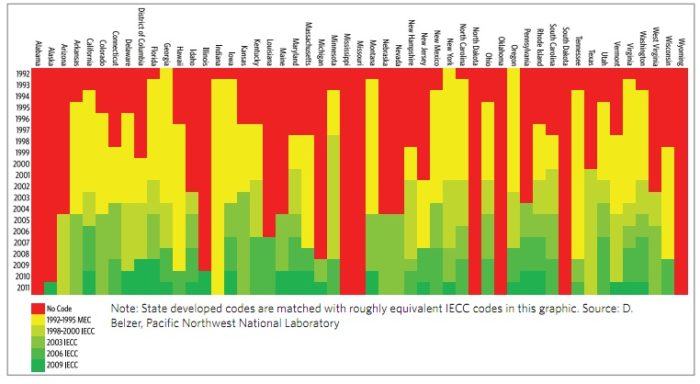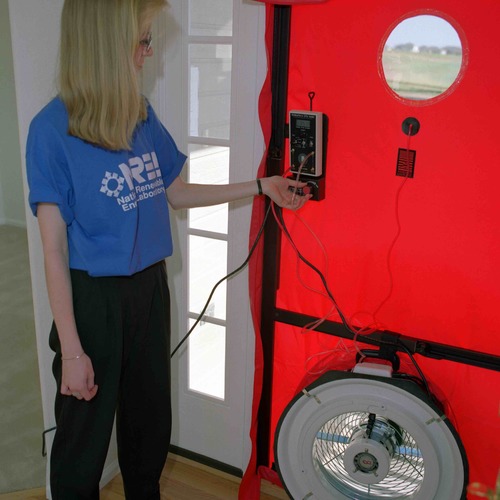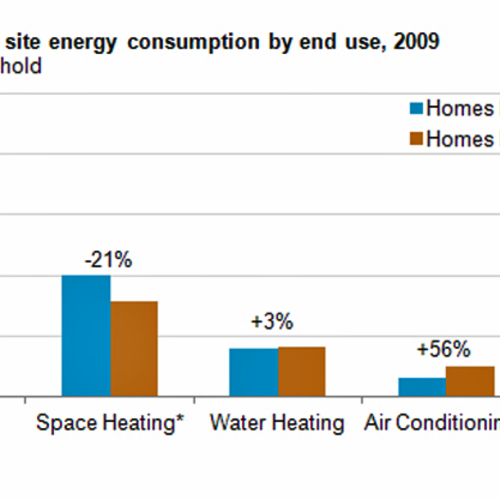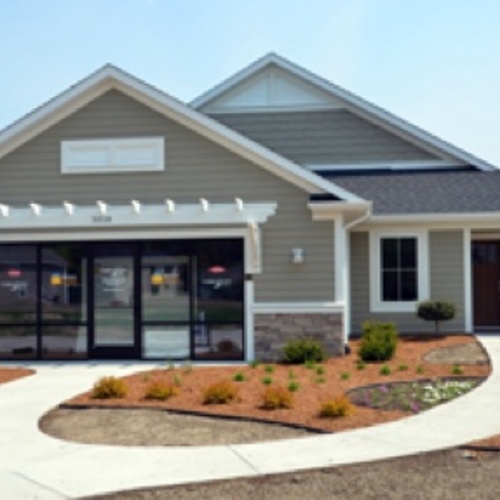Image Credit: Climate Policy Initiative San Francisco
Image Credit: Climate Policy Initiative San Francisco Figures 6 and 7 present the average estimated per-household impact of building energy codes on four energy use measures: total primary energy, natural gas, primary electricity, and other fuels. Compliance with an energy code is associated with lower primary energy use per household. The CPI estimates that the energy savings correspond to a 16% (3.7 tons) annual reduction in greenhouse gas emissions per household in Model 1 and an 11% (2.6 tons) annual reduction per household in Model 2.
What once might have been broad assumptions about the merits of energy efficiency provisions in building codes now have the backing of research. A San Francisco-based organization called Climate Policy Initiative recently completed an analysis that compares states with energy codes to those without.
The results (click here for a PDF of the full, 23-page report) show that homes built when state energy codes were in effect are, on average, 10% more energy efficient, derive a greater share of their energy from natural gas (reflecting code provisions that encourage high-efficiency gas units and electric heat pumps), and, on a per-house basis, average 16% lower greenhouse gas emissions than homes built in locations where there was no energy code. In 2008, that per-house reduction in emissions reduced overall residential building emissions by about 1.8%, the study found.
CPI researchers compiled a nationwide survey of state energy codes, analyzed energy consumption data of the homes in each state, and compared that data with energy use estimates based on building simulation models (which assumed perfect code compliance). The researchers acknowledge that reductions in energy use can be influenced by a number of factors other than code – including appliance standards and utility incentive programs – but also noted that engineering estimates of code-driven energy savings tended to be fairly conservative.
Motivation for the research
The CPI points out that residential buildings consume about 22% of the nation’s “primary energy” – reflecting their total energy footprint, including the embedded energy in fossil fuels before they are refined for sale to consumers – and produce about 21% of the country’s carbon emissions.
Forty of the 50 states have adopted residential building energy code, in most cases a version of the International Energy Conservation Code, which is revised every three years. Some states, notably California, Florida, Oregon, and Washington, have adopted more-stringent standards. The Department of Energy analyzes each model code to evaluate its potential effectiveness, and each state is required to assess whether the model codes that are shown to be effective would be appropriate for adoption. But states are not required to adopt the code. Among those that haven’t, however, are some that promote voluntary adoption or adoption by local governments.
Although the first widely adopted residential building code was the American Society of Heating, Refrigerating, and Air Conditioning Engineers’ standard 90-75 of 1975, the code most builders are familiar with is some version of the IECC standards that began appearing in 1998 and recently saw publication of their fifth update, the 2012 IECC. Homes built in compliance with the 2012 version are expected to be 30% more energy efficient than those built to the IECC 2006 standard, the DOE notes.
Weekly Newsletter
Get building science and energy efficiency advice, plus special offers, in your inbox.
















One Comment
Alternatives to inefficient
Alternatives to inefficient big government (energy codes and all the billions spent checking and enforcing.). Market based persuasion. Simply do like we have done with tobacco. Tax fossil fuel energy progressively over a period of years till the use of fossil fuel is down to where desired. At the same time the working class is getting property taxed out of home ownership. So lower the tax on property so that the government takes in no net gain. Government is too bloated now.
Adding complexity and cost to the codes is not smart. No company would seek to add overhead. Companies thrive on increased efficiency, and researching and discovering and or creating new markets.
GBA is based in the USA. No one here could ever conceive of living under less than democracy. Yes we need government oversight. But it should be crafted as smart efficient market based oversight, not the opposite.
Log in or create an account to post a comment.
Sign up Log in